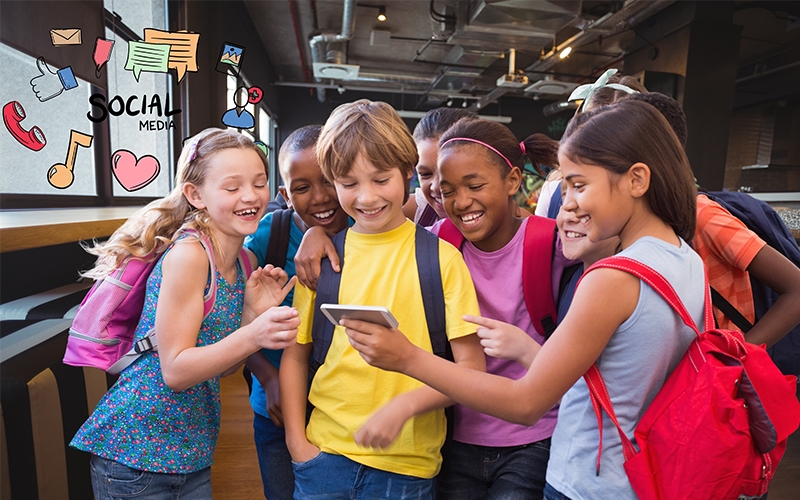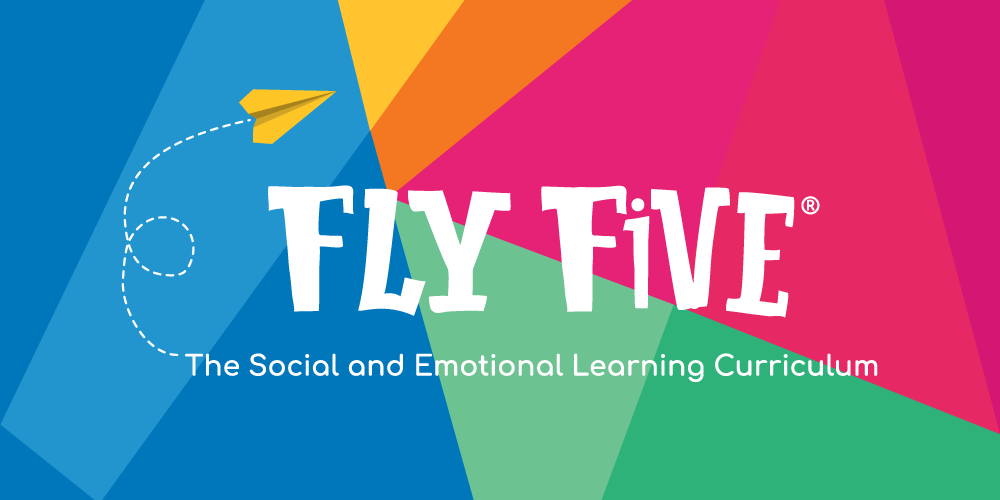Encouraging Empathy through Social Media

When you open your phone, does your thumb automatically hover over the spot where your favorite social media app is, ready to open up and scroll through? If this sounds familiar, you’re not alone--approximately 72% of Americans use some type of social media. Of that percentage, nearly 75% of Facebook users and 60% of Instagram users visit the platforms at least once a day (Pew Research Center, 2019). For our students, the numbers are just as large. Among new apps like TikTok, users aged 13 to 24 make up 69% of the user base (Sehl, 2020). With the influx of social media and the increasing pull to spend time online, the way that we interact with each other is evolving. And while the changes in social behaviors and norms may come with certain anxieties, specifically when it comes to social media that we as adults use differently than our students, we can take steps to foster social and emotional growth online. In particular, we can use social media as a tool for strengthening empathy.
There are reasonable questions surrounding social media’s impact on empathy: What does less in-person interaction mean for our ability to empathize? Will our students be less empathetic if they spend more time online? Social media can in fact affect the way we show empathy. For example, we may be prone to displaying less empathy online because the body language and eye contact that contribute to our understanding of how someone is feeling are not present. Similarly, the perceived anonymity that being online offers can contribute to showing less empathy, as we are unable to see another person’s immediate response. The sheer volume of information we interact with online, resulting in Information overload and overexposure to the news, can also have numbing effects that shape our displays of empathy (Konrath, 2012). However, there is good news! Although social media may impact how we show empathy, research suggests that social media does not actually cause a decrease in empathy. Once we understand how social media impacts empathy for us as well as our students, we can begin using it as a tool to foster empathy through constructive, meaningful online interactions.

Adolescents typically use social media to “self-present” and maintain and strengthen relationships with their “real-life” friends. Using social media in this way may actually increase empathy by fostering deeper connections (Vossen & Valkenburg, 2016) and increasing prosocial behaviors online (Alloway et al., 2014). Social media is neither good nor bad--it is a tool that can be used for many purposes (Konrath, 2012). And, as studies indicate there is a negligible difference between online and offline empathy (Carrier et al., 2015), we can use social media to encourage emotional understanding (Vossen & Valkenburg, 2016) and encourage digital empathy. Consider the following tips:
• Practice digital perspective-taking: Remind students that just because they can’t see someone on the other side of the screen does not mean that person shouldn’t be treated with empathy and respect. Try role-playing with students to have them put themselves in another’s shoes and imagine how they would feel seeing certain words or photos on their screen.
• Reflect on social media uses of students and their friends: Ask students about their recent interactions and open a conversation about when they, or someone they know, did a good job of showing empathy (or not!). When complex situations arise, talk it out with them (Harvard, 2018) and help them articulate which course of online action shows empathy, and which does not.
• Take action: Users can promote causes they care about online (Konrath, 2012), so show students how to do so thoughtfully and responsibly. Encourage them to engage with others’ causes and find ways to to use social media as a means of school and community engagement.
• Practice self-control (Harvard, 2018): Show students the importance of taking a few moments, possibly even a few days, before they hit send. Encourage them to practice mindfulness when it comes to how much time they spend online, which sites they visit, and how they are feeling when they hit send. This can help to limit overexposure and help students manage the immediacy that can come with online use.
• Think critically about who is writing posts and what students think they mean (Friesem, 2016): Critical analysis helps with perspective-taking and can remind students to think closely about not only what others post, but also how their posts may be interpreted. This practice reminds students that for every online post, there is a person with thoughts and feelings who wrote it.
When we are aware of the way social media affects empathy, we can take a proactive stance to ensure that we encourage online empathy just as we do with offline empathy. By teaching students which behaviors are acceptable online and how to humanize whomever they are interacting with, and embedding empathic behaviors into their social media use, we can help social media be a fruitful medium for empathy to thrive in the classroom, the community, and the home.

References:
Alloway, T., Runac, R., Quershi, M., & Kemp, G. (2014). Is Facebook linked to selfishness? Investigating the relationship among social media use, empathy, and narcissism. Social Networking, 3(3), 150-158.
Carrier, M., Spradlin, A., Bunce, J., & Rosen, L. (2015). Virtual empathy: Positive and negative impacts of going online upon empathy in young adults. Computers in Human Behavior, 52, 39-48.
For families: 5 tips for cultivating empathy. (2018). Harvard Graduate School of Education. https://mcc.gse.harvard.edu/resources-for-families/5-tips-cultivating-empathy
Friesem, Y. (2016). Empathy for the digital age: using video production to enhance social, emotional, and cognitive skills. In S. Y. Tettegah and D. L. Espelage (Eds.), Emotions, Technology, and Behaviors (pp. 21-45). Academic Press.
Konrath, S. (2013). The empathy paradox: Increasing disconnection in the age of increasing connection. In R. Luppicini (Ed.), Handbook of Research on Technoself: Identity in a Technological Society (pp. 204-228). IGI Global.
Sehl, K. (2020). 20 important Tiktok stats marketers need to know in 2020. Hootsuite Blog. https://blog.hootsuite.com/tiktok-stats/
Social media fact sheet. (2019). Pew Research Center. https://www.pewresearch.org/internet/fact-sheet/social-media/
Vossen, H., & Valkenburg, P. (2016). Do social media foster or curtail adolescents’ empathy? A longitudinal study. Computers in Human Behavior, 63, 118-124.








